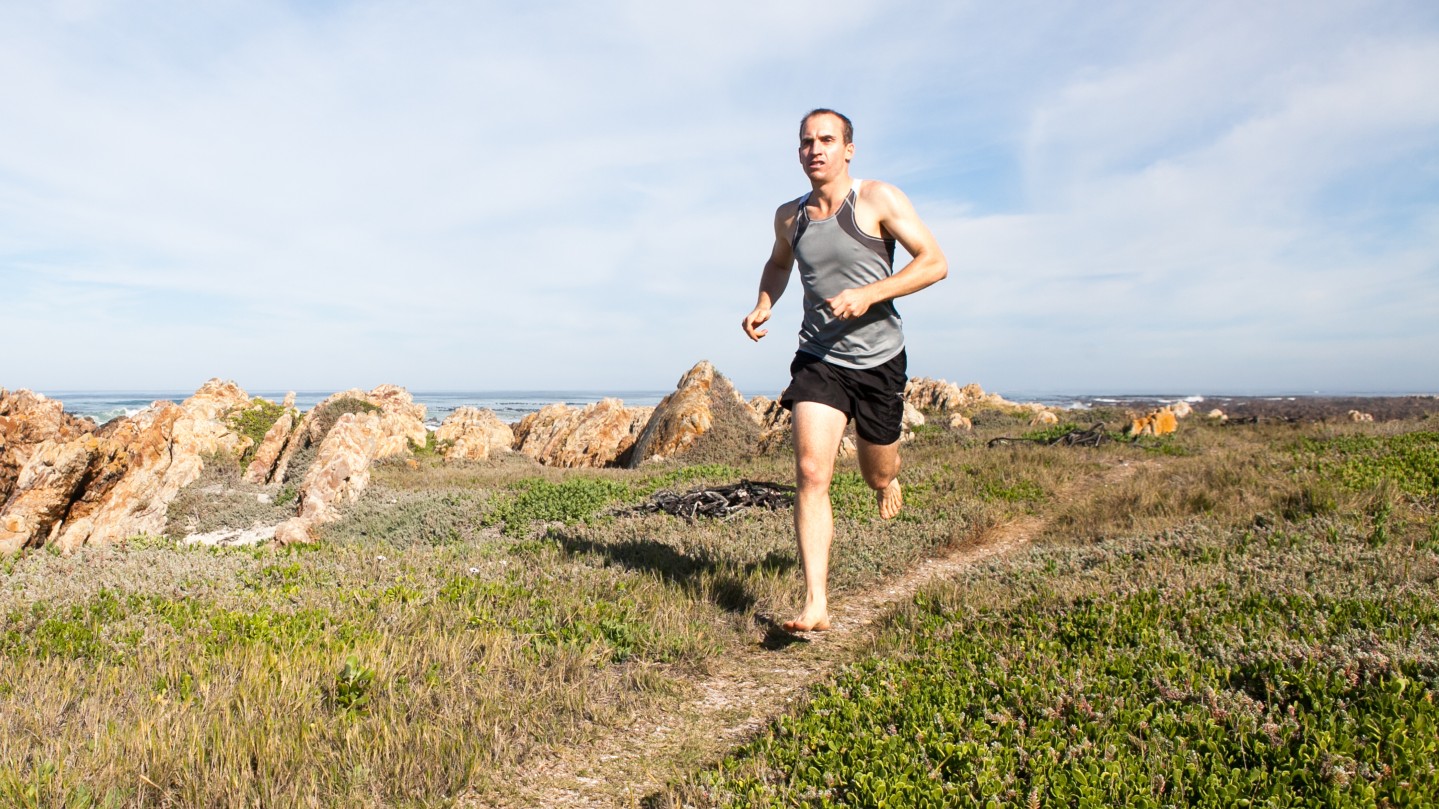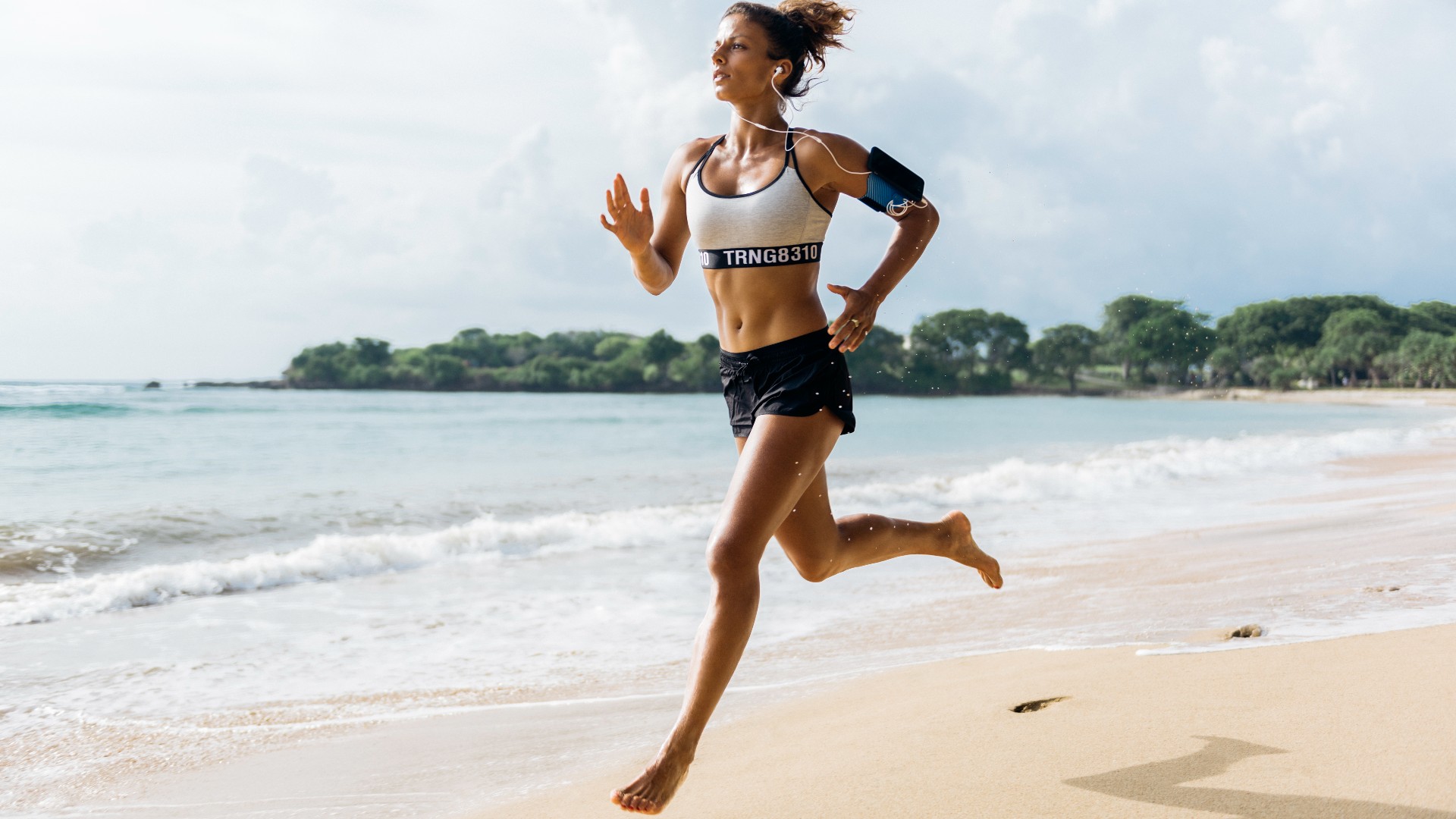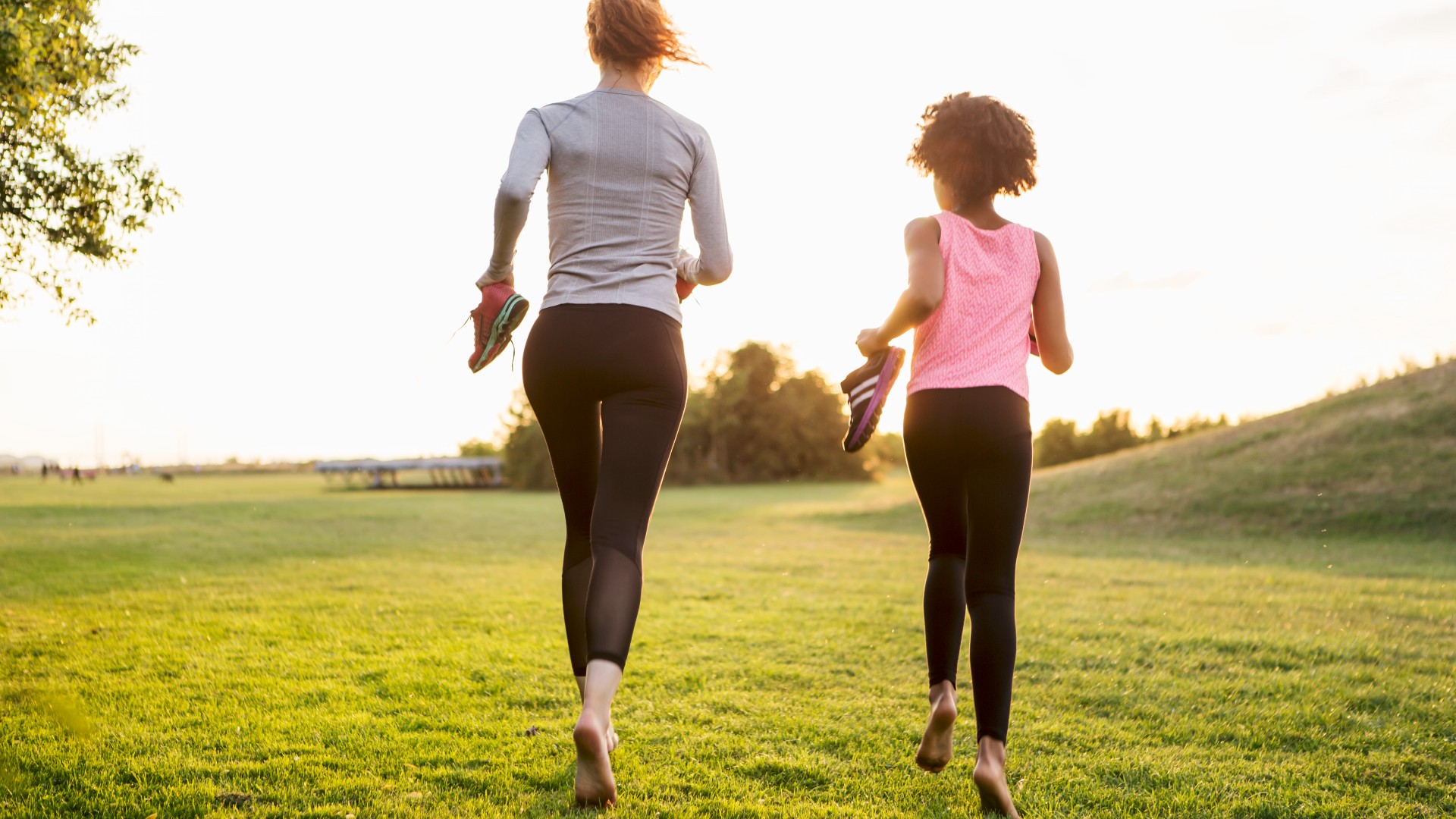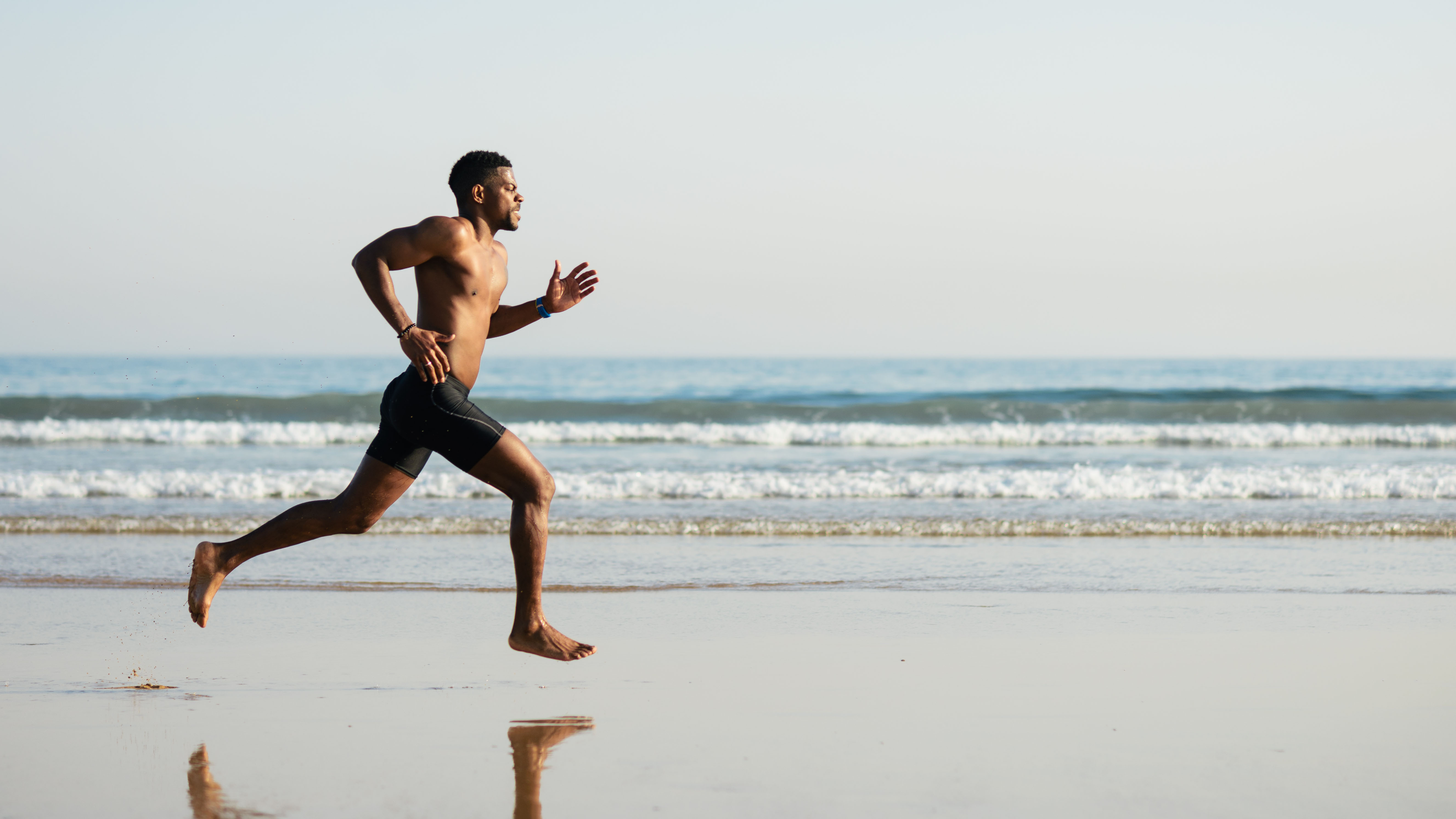Is barefoot running better for you?
We asked running experts and physiotherapists: is barefoot running better for you?

Running barefoot may feel like a wonderful way to connect with nature, but is it actually better for you?
Barefoot running has increased in popularity in recent years but continues to split opinion. One school of thought claims it increases the range of motion through your foot, improves balance and gait, and naturally mimics what we’ve been doing for thousands of years. However, some warn it could increase your risk of injury due to the lack of protection underfoot, exposing you to impact.
There is a lack of robust scientific research to support barefoot running, but many professionals believe there could still be reasons to kick off your running shoes before your next jog. We spoke to experts to answer what barefoot running is and got them to outline the benefits and drawbacks.
A regular marathon participant? Find the best running watches and running headphones to power your stride, or read on to find out if barefoot running could be better for you.
What is barefoot running?
It may seem that barefoot running is just that – running barefoot. However, it also describes a specific running style, performed in thin-soled shoes.
"Barefoot running is based on the idea that running in shoes with minimal support or cushioning is good for reducing rates of injury and improving running gait," says Jodie Breach, the physiotherapy lead for Nuffield Health. "It’s rare that people actually run barefoot, but they choose to run in shoes with thin soles and little cushioning.2

Jodie is a physiotherapist with 20 years’ experience across the NHS and independent sector, spending the last 14 years at Nuffield Health. She currently is the National Physiotherapy Lead, responsible for the safety and quality of the physiotherapy service line as well as providing professional leadership to our large network of physiotherapists. She still works clinically one day a week at The Cheltenham Nuffield Hospital, where her clinical specialisms are foot and ankle and vestibular rehabilitation.
Christian Allen, a product expert at Runners Need, says that barefoot running usually features a shorter stride length than traditional running. And while conventional runners often strike the ground first with their heel, barefoot joggers tend to lead with their forefoot. In theory, this could change the weight distribution of the runner and lessen the impact in certain areas - but there’s limited evidence to support this.
Barefoot running benefits
One review of 23 studies published in Sports Health on barefoot running found current evidence to be "limited to moderate" for the benefits of the sport. There’s moderate evidence for potential benefits such as reduced impact, especially at the knee, and some evidence that it encourages beneficial adaptations such as a shorter stride length and a more frequent running cadence. However, the lack of high-quality evidence suggests that there could be a way to go before we can say for certain if barefoot running is preferable.
Other research – including a study by Lieberman et al – supports the theory that barefoot and minimalist-shod runners strike with the forefoot, which could reduce impact on the knee-joint and related injuries.

But Breach offers a more reserved opinion on the perceived benefits of barefoot running. "It’s possible to understand why people believe barefoot running may be good for some runners," she says. "The main benefit is for runners who suffer from pain at the front of their knee. When you heel strike, most of the load goes through your patellofemoral joint (knee cap), but barefoot shoes that move you to a forefoot strike will shift some load from your knee cap to more of your calf and Achilles.
"However, there’s no evidence of this working for patients with anterior knee pain, and it’s just a theory. There are other ways of reducing load through your knee cap, such as increasing your cadence –the number of steps you take per minute – which is easier to do and less risky," she says.
Despite the lack of conclusive studies, other professionals believe there could be modest benefits to braving bare feet.
"Habitually going shoe-free can do wonders for your proprioception – that is, awareness of the position and movement of your body," says expert podiatrist Dina Gohil. "Your feet touching the ground barefoot (or in socks) will send a clearer sensory input to your brain, allowing it to make a better connection with a specific movement."

Expert podiatrist Dina Gohil BSc (Hons) is a Member of the Royal College of Podiatry and registered with the Health and Care Professions Council in the UK. She is passionate about educating people on foot health and uses her extensive in-clinic experience to help people prevent common problems.
Drawbacks of barefoot running
Alongside the benefits of barefoot running, there could be potential drawbacks, too. Gohil warns that barefoot running could leave your feet vulnerable to wounds and infections and advises taking extra precautions if you’re keen to give it a go.
"You should approach running barefoot as a gradual process, allowing your feet to adapt," she says. "Concrete pavements will have a harder impact than grassy terrain and paths, so until you become acclimatized to the great outdoors, you may find you’re more prone to blisters until firmer skin forms."
Allen says that you could also increase your risk of developing running-related conditions. "As your heels are closer to the ground, drawbacks include increased strain on the Achilles tendon and more frequent calf and plantar pain complaints," he says. "Runners with podiatric concerns, such as flat feet, bunions, plantar fasciitis, and tendonitis, may struggle with barefoot running as their problem areas require footwear with additional corrective support."
Christian Allen is a product expert at Runner’s Need. He has an England Athletics Leadership in Running Fitness qualification and has been hosting run clubs for over five years. He also has a certificate of higher education in sport and exercise science from St Mary's University.
Physiotherapist Breach also warns that changing your running style will never completely remove loading and it just shifts to somewhere else instead. "Barefoot running shifts weight to the forefoot, calf muscle, and Achilles, increasing the likelihood of calf strains, Achilles tendinopathy, and stress fractures in metatarsals," she says.
"There is no evidence to support the claim that cushioned shoes reduce the strength of your feet," she adds. "Muscles still have to work hard in traditional running shoes to control the force going through your body when you run."

How to run barefoot safely
Running changes your body, but no one wants that to be for the worse. Developing a safe barefoot running technique is paramount to prepping potentially vulnerable feet for training.
"The transition from conventional to barefoot running needs to be carried out carefully," says Allen. "Asking too much of your body too soon could result in acute injuries, but focusing on form and technique, then building up your speed and distances, will help the body adapt to this running style," he says. "In the unlikely scenario that a runner chooses to take the phrase barefoot running literally, they run the risk of skin damage, cuts, and possible subsequent infections."
- Read more: Expert running tips from a sports scientist

Breach recommends choosing shoes that feel most comfortable for you, whether they be highly cushioned, motion control, or minimalist. "The claim that barefoot running is good for injury prevention and improved performance isn’t yet supported by evidence. If you’re injury-free and want to try it, this should be slow and careful." Breach says that the only time a minimalist shoe that has less of a drop from heel to toe box might help is if you struggle with knee pain. This is because you’re shifting load from knee to ankle, although this could just create an issue somewhere else.
Breach advises speaking to a physiotherapist first to discuss your best move. "Manipulating your cadence and improving strength in your glutes around your knee could help change symptoms without changing your shoes. If you have any history of Achilles and calf issues, I would not recommend minimalist shoes as this could flare symptoms. I also wouldn’t recommend these shoes if you have a history of bony stress fractures in your feet, as this could contribute to their development."
Sign up for the Live Science daily newsletter now
Get the world’s most fascinating discoveries delivered straight to your inbox.

Sam Hopes is a level III fitness trainer, level II reiki practitioner, and resident fitness writer at Future PLC. Having trained to work with both the mind and body, Sam is a big advocate of using mindfulness techniques in sport and aims to bring mental wellbeing to the forefront of fitness. She’s also passionate about the fundamentals of training and how we can build more sustainable training methods. You’ll find her writing about the importance of habit-building, nutrition, sleep, recovery, and workouts.










